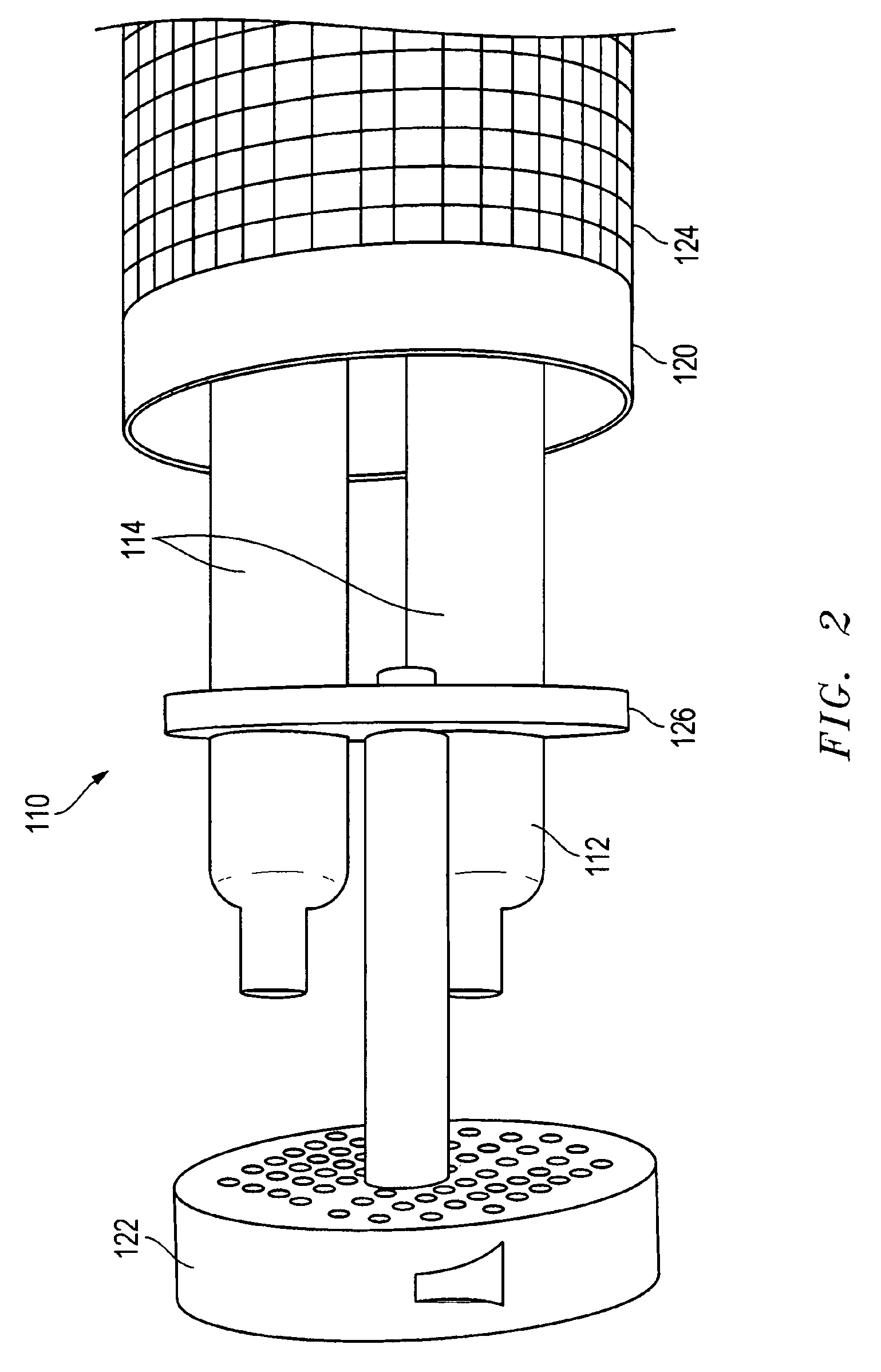Sterilizer
a sterilizer and ultraviolet radiation technology, applied in the direction of material analysis using wave/particle radiation, disinfection, instruments, etc., can solve the problems of high failure rate of lamps and ballasts, degraded uv output, and high maintenance cost resulting from frequent lamp replacements. achieve the effect of facilitating energy saving and controlling flow pacing
- Summary
- Abstract
- Description
- Claims
- Application Information
AI Technical Summary
Benefits of technology
Problems solved by technology
Method used
Image
Examples
Embodiment Construction
[0022]The lamp assembly and system of the present invention is used to treat water, waste water and air for both human consumption and industrial process. It also sterilizes solid items that may be contaminated. The process of purification or fluids or sterilization of items is achieved by exposure to UV radiation. A high frequency current in the form of microwaves is applied to electrodeless UV lamps. The lamp assembly is wholly surrounded by a waveguide that traps the microwaves within the waveguide enclosure. In this way, the microwaves travel the full length of the UV bulbs to stimulate the entire bulb to emit UV rays.
[0023]The microwaves collide with and ionize the gas atoms within the UV lamps to form a plasma by a process of impact ionization. As a result of avalanche ionization, the conductivity of the ionized gas rapidly rises, allowing higher currents to flow through the lamp. The mercury within the UV lamp is likewise ionized to emit light in the UV region of the spectrum...
PUM
| Property | Measurement | Unit |
|---|---|---|
| dominant wavelength | aaaaa | aaaaa |
| wavelengths | aaaaa | aaaaa |
| wavelengths | aaaaa | aaaaa |
Abstract
Description
Claims
Application Information
 Login to View More
Login to View More - R&D
- Intellectual Property
- Life Sciences
- Materials
- Tech Scout
- Unparalleled Data Quality
- Higher Quality Content
- 60% Fewer Hallucinations
Browse by: Latest US Patents, China's latest patents, Technical Efficacy Thesaurus, Application Domain, Technology Topic, Popular Technical Reports.
© 2025 PatSnap. All rights reserved.Legal|Privacy policy|Modern Slavery Act Transparency Statement|Sitemap|About US| Contact US: help@patsnap.com



